I promised this a while ago, but I finally got the time to make my newest batch. Today I'm using concord grape juice to make some
red red wine. Traditionally, concord grapes are used for juice and jams, but there are some companies that make nice wine out of concord grapes. Since grocery stores don't sell wine grapes (or wine grape concentrate), I'm limited by the varieties they use.
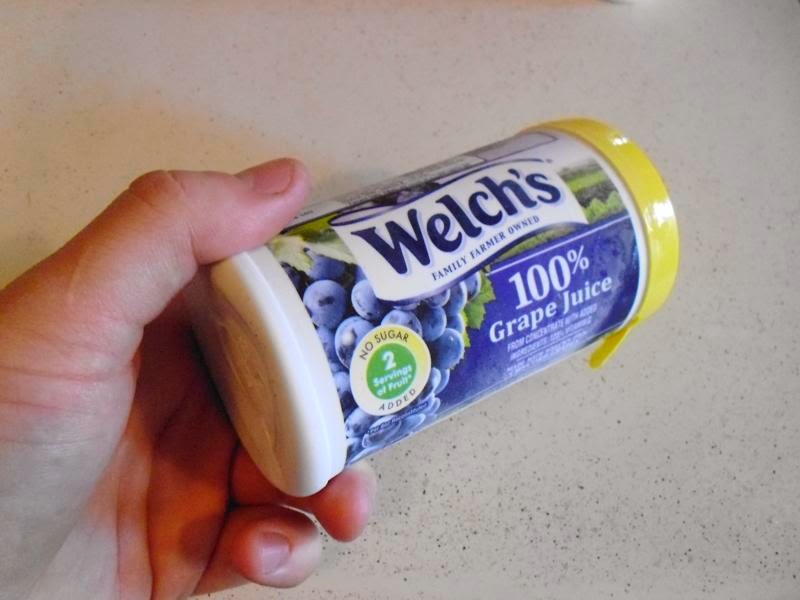 |
| 100% Grape Juice. Never use that cocktail stuff. |
Fun fact, concord grapes are a different species than most wine grapes. (Concord is Vitis labrusca while most wine grapes are Vitis vinifera).
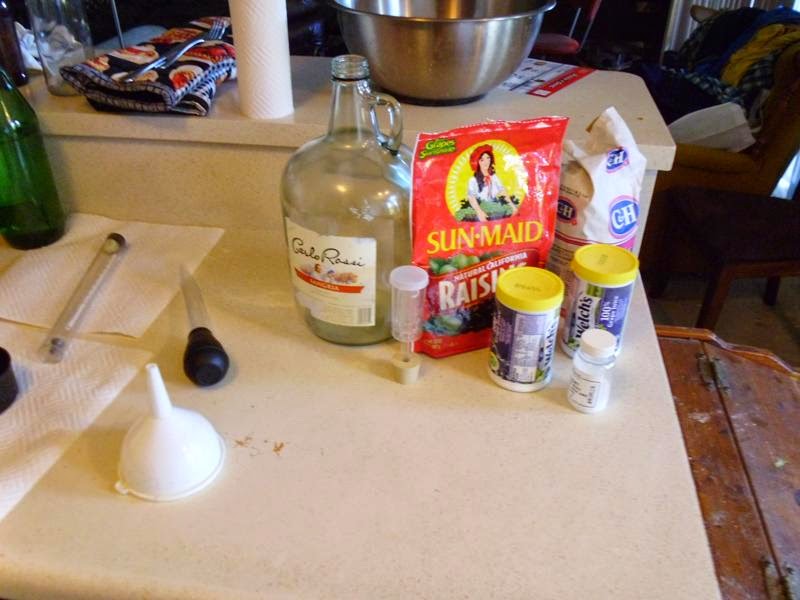 |
| Everything needed to make some delicious wine |
Concord Grape Wine (from concentrate)
2 cans Concord Grape Juice concentrate
1 tsp yeast nutrient
Handful of Raisins
Water to make 1 gallon
You might notice that unlike my previous two batches of wine, I am using raisins in this recipe in addition to the yeast nutrient. Aside from the nutrients it provides to the yeast, I'm testing to see if the skin will impart any additional flavor to the wine.
It should go without saying that you need to clean all your supplies first using the proper sanitation supplies.
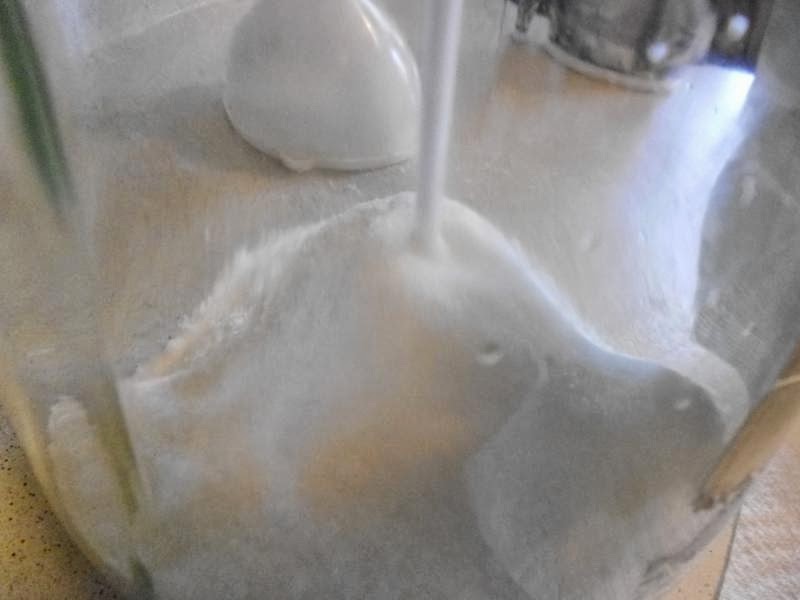 |
| I hate adding sugar because my funnel always gets clogged. |
By habit, I like to start by adding my dry ingredients first. First I added in the 3 cups of sugar followed by the raisins. Before I added in the raisins, I threw them in a bowl and sprayed them with some Star San to kill off any bugs that might be on them (they've been sitting in the closet for a while). The cleaning solution won't harm the wine at all, as the acid concentration is very dilute.
 |
| The raisins are still tasty! |
During this time I also warmed up some water to rehydrate the yeast in. By the time everything else is added, the 15 minutes required to rehydrate will have passed.
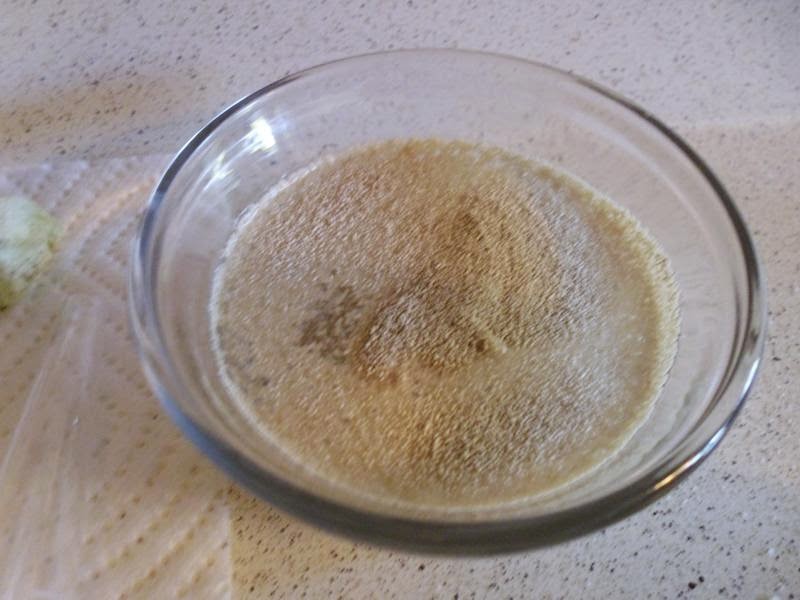 |
| I'm running low on this yeast |
Somehow, this juice concentrate doesn't freeze as much as some of the other ones I have made wine with, so getting all the ice to melt was not a significant problem. It took about 8 cans worth of water to fill the jug up to 1 gallon.
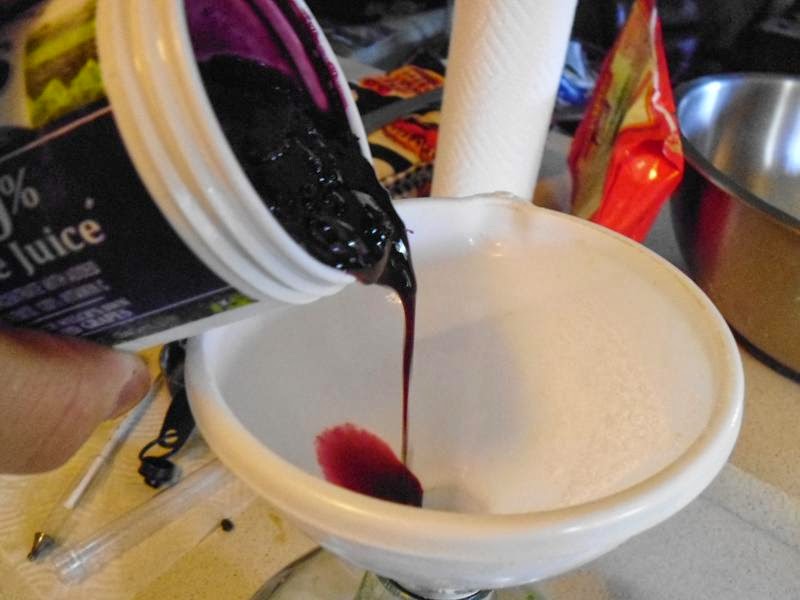 |
| Purple drank |
 |
| It looks like the La Brea Tar pits! |
Once the juice and water have been added, the must needs to be aerated/the sugar needs to dissolve. This is why I like adding in the solid ingredients first as once all the sugar is incorporated, then I know the must has enough oxygen for the yeast to do their job.
 |
| The foaming is pretty normal for this kind of juice...I hope it doesn't cause problems later. |
The yeast is ready to be pitched, but not without a gravity measurement first. The hydrometer reading for this batch was
1.100, meaning this wine will be around 14% ABV when completed. It'll take around 2 weeks or more to ferment, and a month or so of aging. Until it's ready, Cheers!
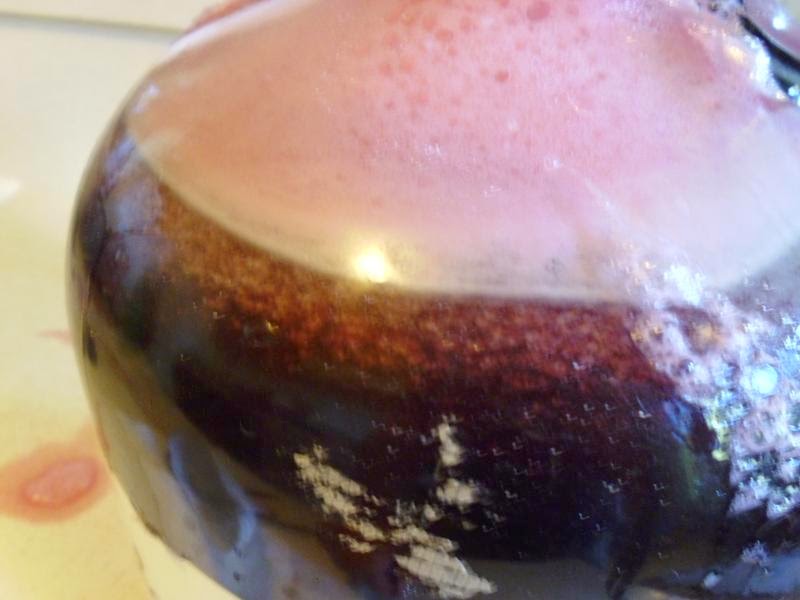 |
| Go yeast, attack! |
 |
| Only container fermenting at the moment. |
If you're interested in what we do and want to see more homebrewing, sign up for our mailing list. You'll receive our free eBook.
Update 4/13: After 3 weeks and an explosive fermentation, it was time to rack this wine to secondary. I'll give it a few days to let it settle out from anything the raisins might have left behind. Final gravity reading was
0.992, giving a final ABV of
14.5%. From tasting, it might not need too much aging as it's pretty good in it's current state.
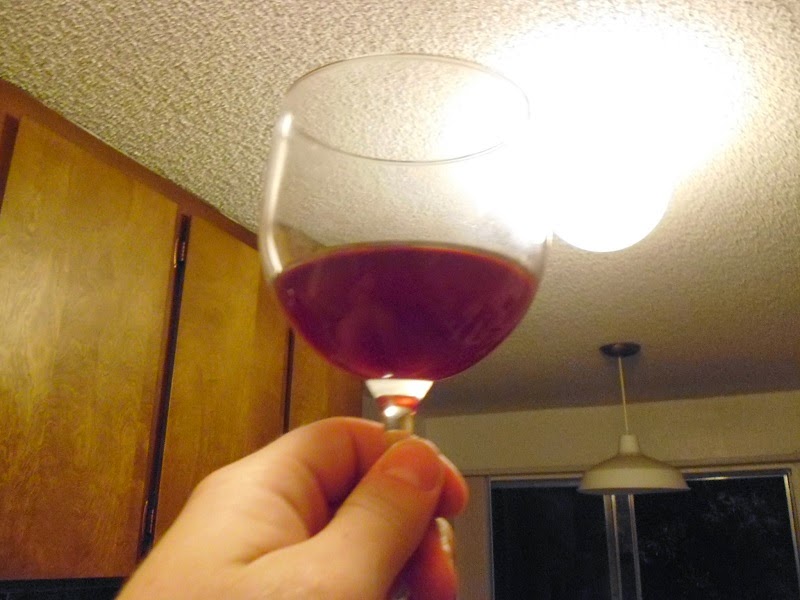 |
| Cheers mate |
Update 4/14: Bottled the wine. Got 2 40 oz bottles and 1 wine bottle worth. Cheers!
 |
| Total yield from batch |













You used Welch's frozen grape juice concentrate, I have grape juice I have made from concord grapes I have picked off the vine and made juice. Can I use this? How much homemade juice would be equilant?
ReplyDeleteYou can absolutely use juice made from your own grapes, I've done this myself. If you have juice from grapes you made, then you wouldn't have to worry about diluting anything. Depending on the sugar content of your juice, you may opt to add some sugar prior to adding yeast.
Delete